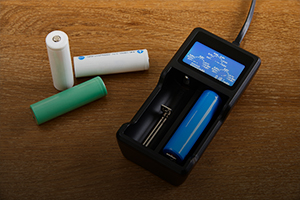Iron Ion Battery

Researchers have developed a stable, low-cost alternative to lithium-ion batteries using iron. In addition to being more cost-effective, the new batteries have the potential for slightly more storage capacity and are less likely to overheat than their lithium-based counterparts.
Lithium reserves are in short supply around the world due to the high demand for rechargeable batteries in everything from cell phones to automobiles. The process for mining lithium requires huge amounts of water (up to 500,000 gallons per ton of mineral) and toxic chemicals, both of which undermine efforts toward sustainability and protecting the environment. In addition, fabrication of lithium-ion batteries requires a controlled environment, further increasing production costs.
The new battery is composed of an anode made of low-carbon steel, a cathode of vanadium pentoxide, and an iron chloride electrolyte. Iron is not only less expensive than lithium, it also has a higher redox potential – meaning that it more readily loses and gains electrons, a necessary property for charging and recharging. Because the iron ion is less reactive, it can be fabricated in ambient conditions, and iron’s inability to produce dendrites prevents the batteries from short-circuiting during discharge.
The capacity of the proof-of-concept batteries is about 70 percent that of lithium-ion, and they have been demonstrated to withstand up to 150 charge-discharge cycles, with about 54 percent capacity remaining after 50 cycles. Further research will focus on improving stability and energy density.
For information: Ramaprabhu Sundara, Indian Institute of Technology, Department of Physics, Chennai, Tamil Nadu 600036, India; Web site: https://www.iitm.ac.in/